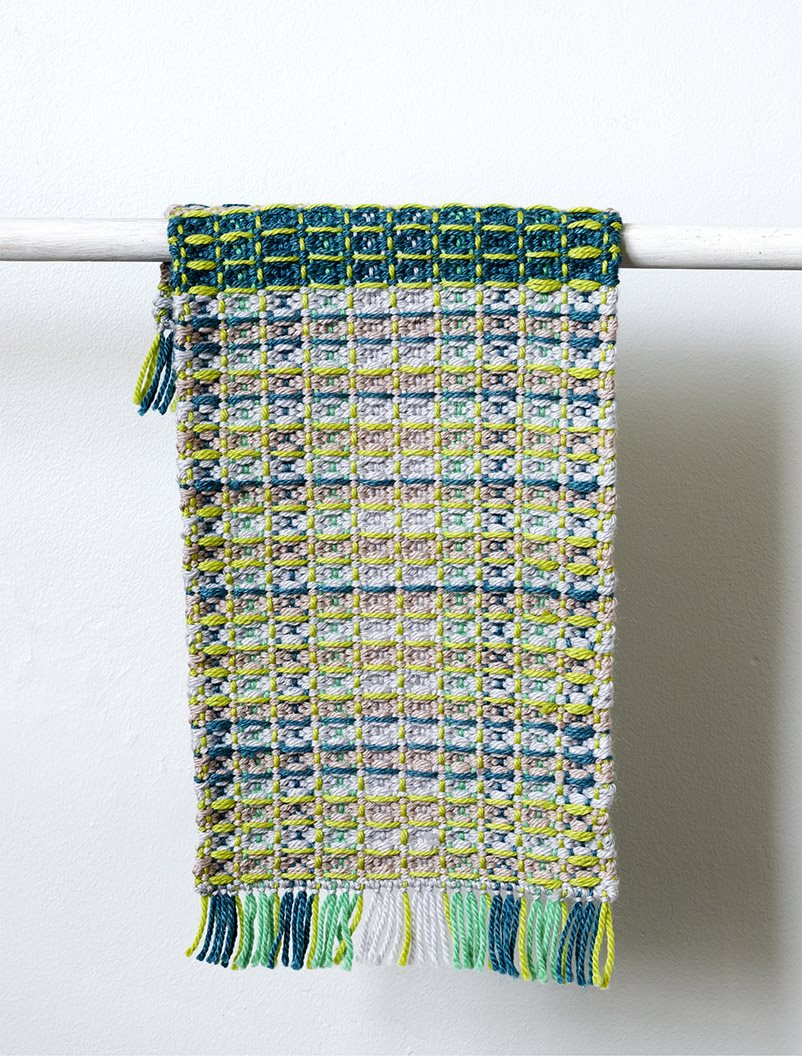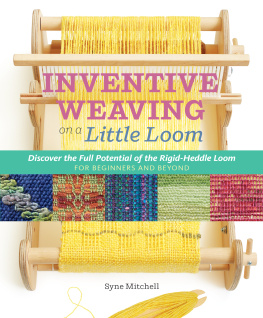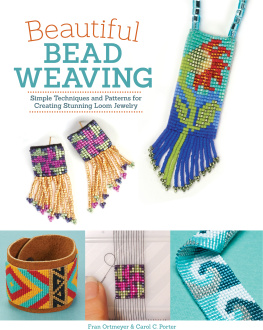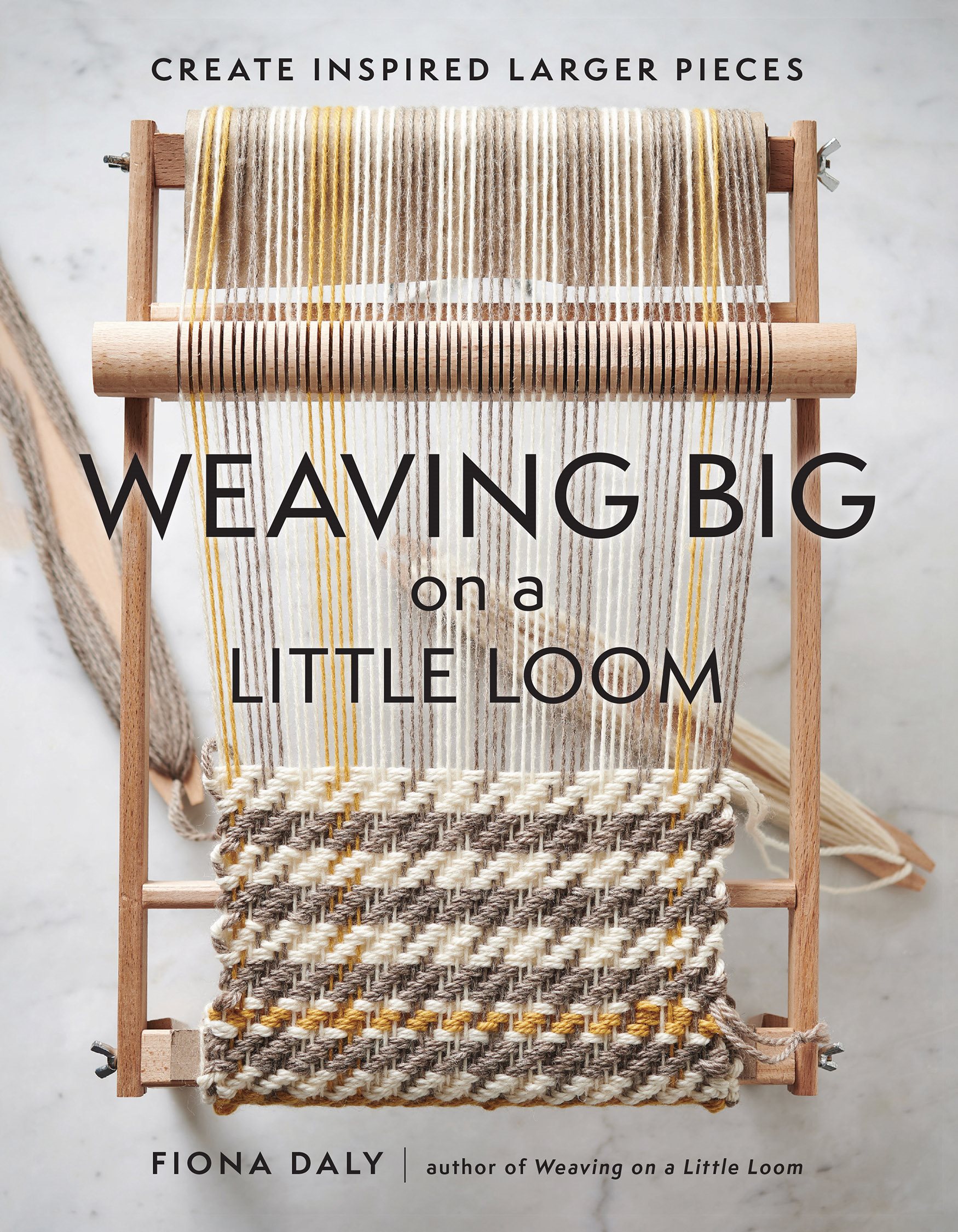Contents
Guide
Pagebreaks of the print version



Published by
Princeton Architectural Press
70 West 36th Street, 11th Floor
New York, NY 10018
www.papress.com
Conceived, edited, and designed by
Quarto Publishing plc
an imprint of The Quarto Group
6 Blundell Street
London N7 9BH
www.quarto.com
Text and pattern/project designs 2022 Fiona Daly
Design, photography, and illustrations 2022 Quarto Publishing plc
Princeton Architectural Press edition, 2022
All rights reserved
ISBN: 978-1-64896-122-9 (hardcover)
ISBN: 978-1-64896-143-4 (epub)
For Quarto:
Editor: Jenny Fox-Proverbs
Projects editor: Anna Galkina
Designer: Rachel Cross
Photographers: Al Higgins, Nicki Dowey, and Phil Wilkins
Illustrator: Kuo Kang Chen
Art director: Gemma Wilson
Publisher: Lorraine Dickey
For Princeton Architectural Press:
Editors: Rob Shaeffer and Stephanie Holstein
Cover Design: Paul Wagner
Special thanks to Cynthia Alberto of The Weaving Hand, Gretchen Jaeger of Halcyon Yarns, and Karen Gerstel of Under Mountain Weavers for their invaluable feedback.
No part of this book may be used or reproduced in any manner without written permission from the publisher, except in the context of reviews. Every reasonable attempt has been made to identify owners of copyright. Errors in omissions will be corrected in subsequent editions.
Library of Congress Control Number: 2021948960
CONTENTS
MEET FIONA
Hello! My name is Fiona Daly and Im a textile designer-maker, handweaver, and writer from Ireland. My practice is craft- and research-led, focusing on sustainable textiles, circular design, weave, and education. I am a member of Design & Crafts Council Ireland. I design for mills, teach within higher and further education, and run private workshops, while also developing my own handweaving craft practice. I am incredibly passionate about the craft of handweaving, and thoroughly enjoy sharing this love through my teaching and my books. My first book, Weaving on a Little Loom, was published in 2018.
My love of constructed textiles began at an early age, influenced by my grandmother, who worked as a lacemaker and ran her own craft shop in the west of Ireland. It was a natural progression that I went on to study Textile Design at the National College of Art & Design in Ireland. During these highly creative, stimulating years, I also had the opportunity to study in Bergen, Norway, where my appreciation of traditional crafts and materials grew. After graduating, I honed my weaving skills while working for a handweaver in the west of Ireland.
Since then, my weaving journey has evolved into many strands. Through weaving residencies in the Shetland Islands and rural Denmark, I greatly developed my woven design skills. During my years in Edinburgh, I was involved in a multidisciplinary craft workshop, where I began teaching weaving courses and fell in love with it! More recently, I went back to school to study for my masters in Textile Design at Chelsea College of Art & Design in London, choosing to study there as it consolidated my interest in sustainable textiles. This allowed me focused time to research core theories and design principles, which now underpin my weaving practice, and which I aim to extend and share more widely through this book.
Slow, sustainable, and ethical textiles are all striving toward the same aspirational goala healthier relationship between us, our clothes and textiles, and our planet. A slow movement means just thatto slow down speedand it can be applied to just about anything. The concept is born out of the Slow Food movement, the brainchild of Carlo Petrini, with roots dating back to 1986 in Italy. It aims to celebrate regional, local cuisine, made from well-sourced, quality ingredients. Thanks to Carl Honors book In Praise of Slow (2004), the slow movement concept has mushroomed globally, encompassing industries as broad as food, design, and agriculture, among many more.
The Slow Textiles movement developed as a response to the twentieth-centurys detrimental fast fashion industry of mass-produced clothing, with its ill-considered materials, production, and supply chains. In contrast, slow design encourages designers to make a conscientious choice when it comes to materials and processes. At the same time, it urges designers and consumers alike to slow down the ever-increasing pace of fashion and textiles.
The philosophies behind the Fibershed movement borrow from this slow framework. Established by the pioneering Rebecca Burgess, Fibershed urges us to ask the same questions of our clothing as we now do of our food. A fibershed can be described as a geographical landscape that provides the resources and infrastructure to create a local, regional textile supply chain with low environmental impact. Meanwhile, sustainable textiles represent the need to improve the sustainability of the textiles throughout their life cycle, from design to end of use.

Throughout the process of writing this book and designing its projects, I have kept these principles in mind. In the first chapter, you will find a section on the origin of materials, linking you, the weaver, back to the beginnings of your yarns. The yarn suppliers carefully selected for the project designs all share my local, ethical, and sustainable ethos.
As my weaving practice is rooted in sustainable design ethos, I wanted to feed this approach into the book, and share these ideas with other weavers. My aim is to encourage you, the hobbyist weaver, to consider your choice of materials and their environmental impact. Throughout the book there is an underlying focus on encouraging weavers to use sustainable, locally produced yarns and materials.
Being restricted by the size of the loom, particularly a frame loom, is a frustration I hear so often from my students, especially when they are in their weaving groove. So in this book, I also wish to encourage you to push your frame loom to its limits to weave long textile pieces, something that you may not have considered before! Through weaving the projects in this book, it is my hope that you will create your own slow textilesa collection of large textiles for you and your home, from bags to an oversized scarf to pillows. Through thinking a bit about these concepts, I also hope the growing conversation around sustainable textiles can be explored in your own patch of the weaving world.
Happy Weaving!
Fiona


TEXTILES AND THE ENVIRONMENT
For me, Fall 2018 marked a turning point in public awareness of the pressing issue of climate emergency. October 2018 saw the publication of the landmark report by United Nations body the Intergovernmental Panel on Climate Change. Shortly after, in December 2018, Sir David Attenborough attended the opening of the 24th UN Climate Change Conference (COP24) in Poland. Delivering the Peoples Seat Address, he advocated passionately for the need by everyone to take action. Greta Thunbergs ongoing School Strike for Climate Change, and Extinction Rebellions protests, were set to the backdrop of the horrific impacts of raging bush fires, flash floods, earthquakes, and droughts being experienced around the globe today. We were warned of such catastrophic events, but they are still shocking to observe and devastating to experience.













